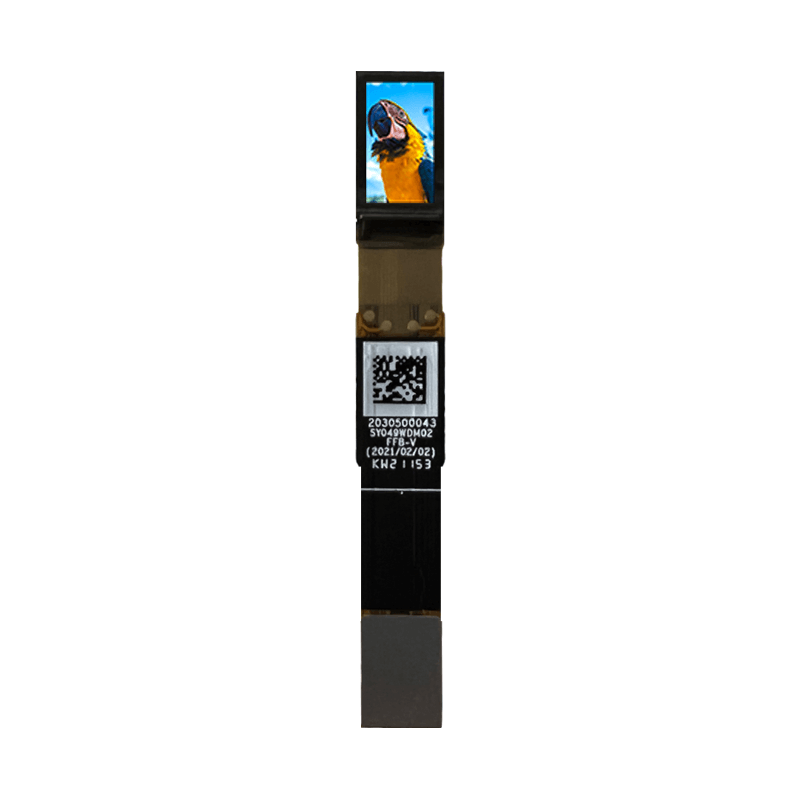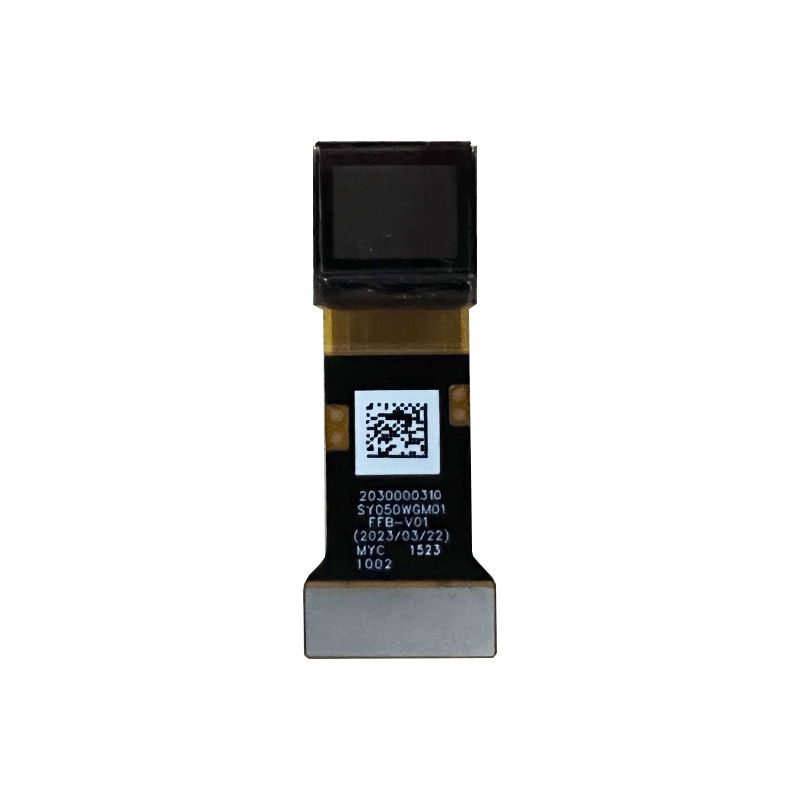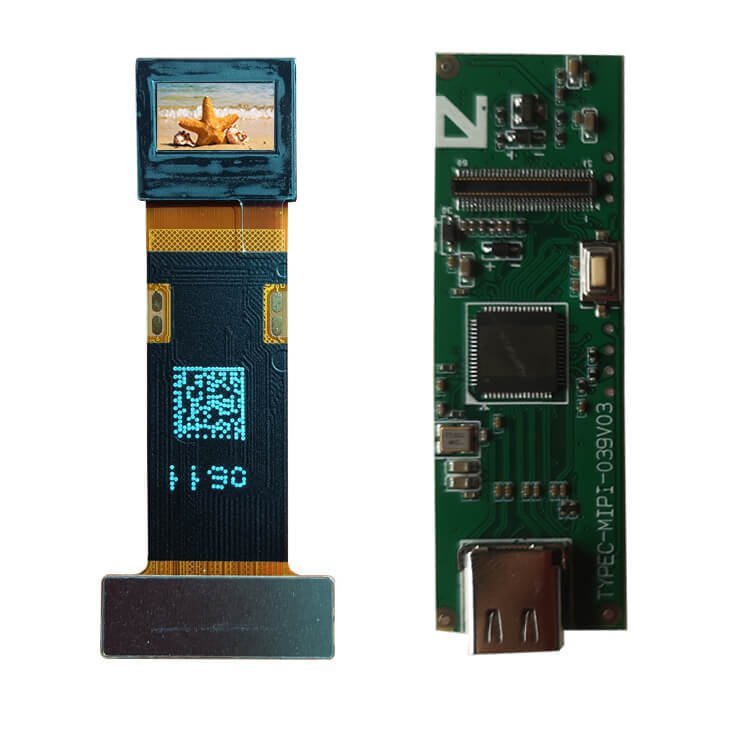OLED Microdisplays Solutions
A micro OLED display is an OLED (organic light-emitting diode) display that uses smaller pixels and panels to create high-resolution images. Micro OLED displays are also known as OLEDoS or OLED microdisplays.
MicroOLED displays offer high PPI (pixel density), high integration, and small size. This ensures they are easily portable, have good shock resistance, and have ultra-low power consumption. MicroOLED displays are mainly used in immersive and see-through applications such as augmented reality and virtual reality devices, telescopes, microscopes, and FPVs.
Micro-OLED, also known as OLEDoS and OLED microdisplays, is one of the rare cases where the tech is exactly as it sounds: tiny OLED “micro” displays. In this case, not only are the pixels themselves smaller, but the entire “panels” are smaller. This is possible thanks to advancements in manufacturing, including mounting the display-making segments in each pixel directly to a silicone chip. This enables pixels to be much, much smaller.



0.32inch Microdisplay 800*600 2000nit(Brightness can adjust)
GL032AMN10A is a 0.32-inch diagonal, 800× 600 dots active-matrix color OLED panel module based on single-crystal silicon transistors. This panel integrates the panel driver and logic driver and realizes small size, light weight, low power consumption, and high resolution.
Applications: View finders, Head-mounted displays, etc.
- 800 x 600 Real RGB Resolution
- AP Operated Resolution
— 800 x 600,320 x 240,
- Frame rate: 800 x 600 up to 120hz
- The normal operation supports full-color mode: 16.7M colors (24-bit 8(R):8(G):8(B))
- Interface
— RGB interface(R:8bit,G:8bit,B:8bit)
— MIPI D-PHY with 2 lanes
–I2C interface
- Vertical/Horizontal scan direction control
- Orbit supported
- Wide range Brightness adjustment
- Normal/Rolling/Dimming mode
- Temperature compensation
- Over temperature protect
- 3 Power input: ELVDD(5.3~6v), ELVSS(-4.45~-4.55v), VDDI(1.62~1.98v)
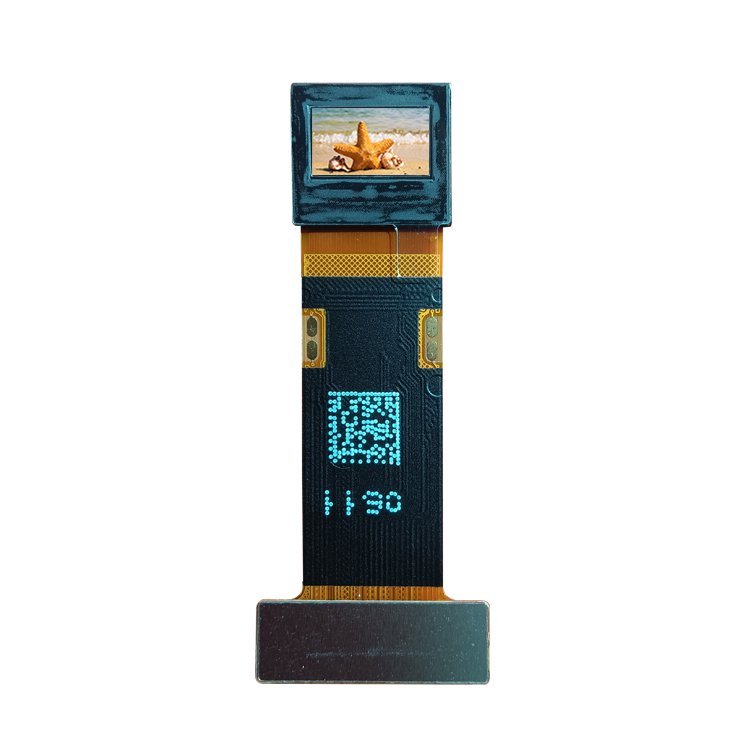

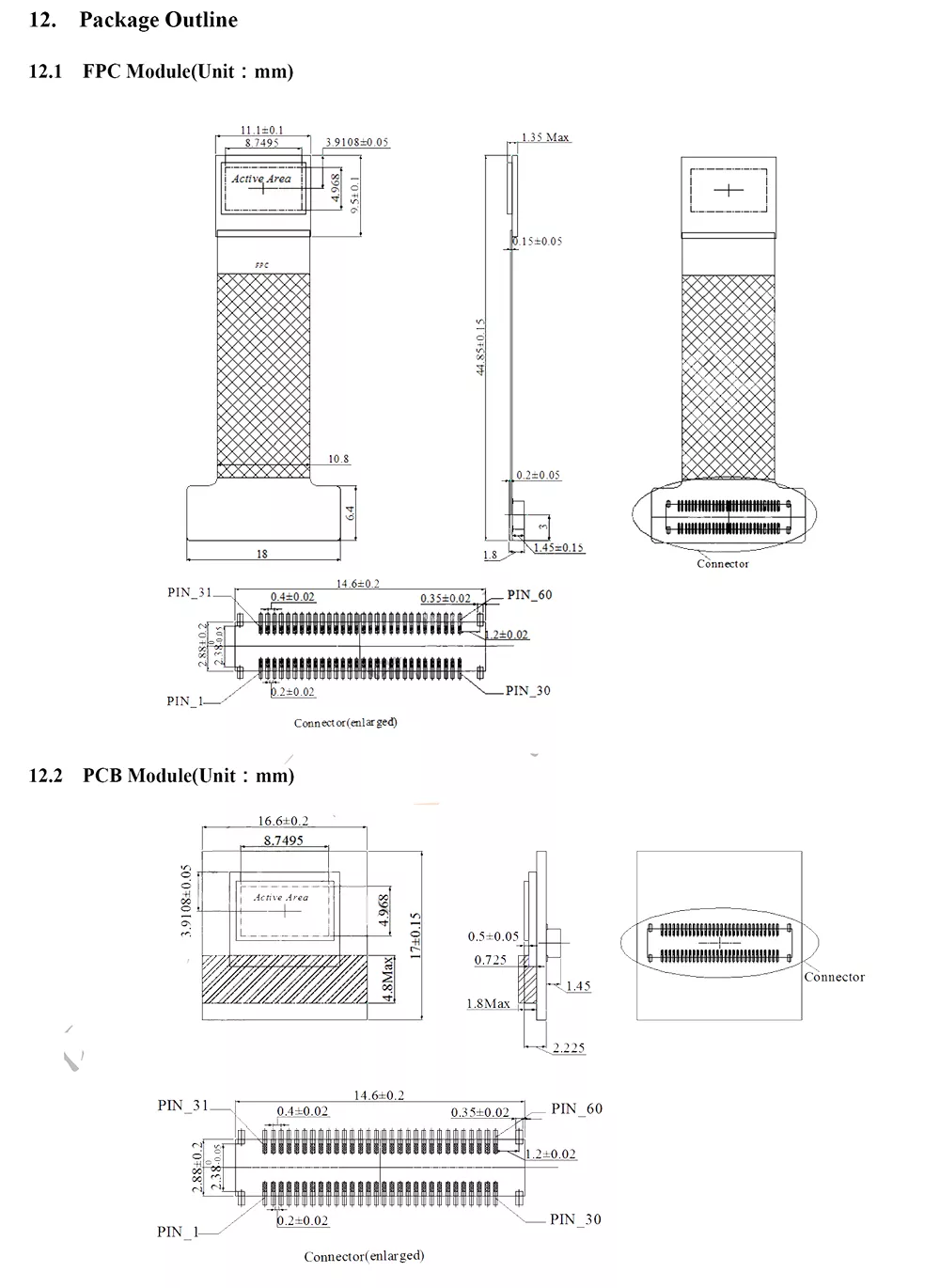
0.39inch BOE Microdisplay 1920*1080
GL039AMN10A is a 0.39 inch(1 cm) diagonal, FHD resolution(1920 x1080), active matrix color OLED (Organic Light Emitting Display)panel module based on a single crystal silicon backplane. The pixel circuits and driving IC are integrated into the silicon backplane to get the compact size and deficient power consumption.
Applications: Virtual Reality application(AR/VR), Head-mounted displays, Near-Eye Displays etc.)
- Small-size, high resolution 0.39 FHD Display PPI=5644
- AP Operated Resolution (8*M, M=40~240) x RGB x (8*N, N=30~135)
- Full-color mode,16.7M colors
- Fast response
- Thin and light in weight
- Color enhancement, Sharpness enhancement
- High contrast mode
- High fluency mode
- Power-saving (PS) mode
- Scan direction selection, up or down
- Interface, Support MIPI only or MIPI+I2C

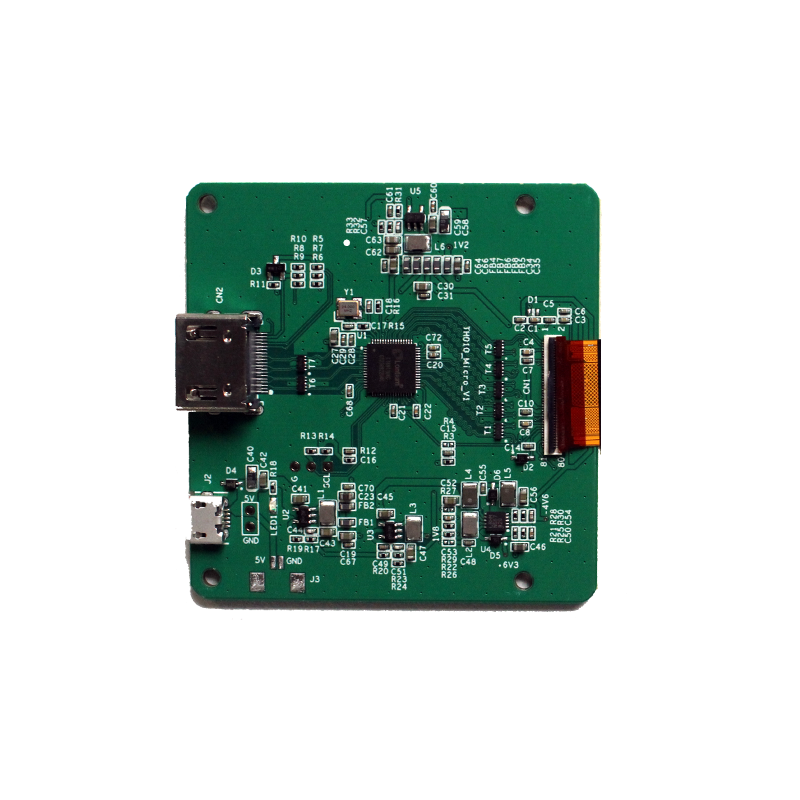
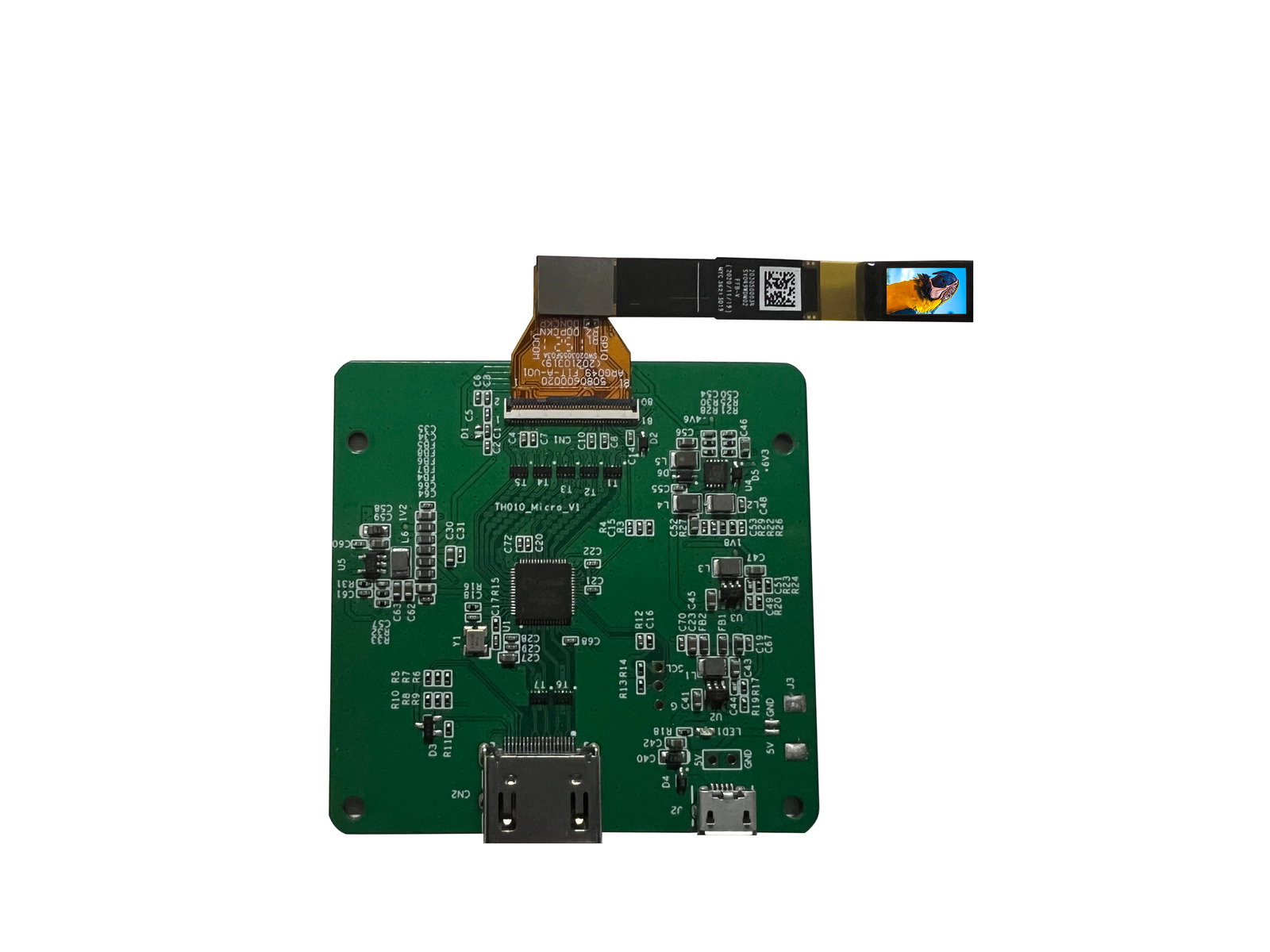
0.49inch Microdisplay 1920*1080 2000nit(Brightness can adjust)
GL049AMN10A is a 0.49 inch diagonal, 1920(RGB) × 1080 dots active matrix color OLED module based on single-crystal silicon transistors. This module integrates the panel driver and logic driver and realizes small size, lightweight, low power consumption, and high resolution.
Applications: Augmented Reality, Viewfinders, Head-mounted displays, etc.
- 1920 x 1080 SPR Resolution
Multi-Resolution (4*M, M=160~480) x RGB x (4*N, N=120~270)
- Frame rate: 1920×1080 up to 90Hz
- Support 8bits or 10bits color depth
- Interface
— MIPI+ I2C
— MIPI DPHY v1.2 with one port (4 lanes), 1.0Gbps/Lane
— MIPI DSI v1.01 R11 Video mode
— Support VESA-DSC v1.1 in-chip decoder (3X and 3.75X compression ratio)
— Support scaling up 1.33x(e.g., 1440×810 to 1920×1080), 1.5x (e.g., 1280×720 to 1920×1080) and 2x (e.g.,
960×540 to 1920×1080)
- Scan direction selection, up or down and right or left
- Orbit supported
- Wide range Brightness adjustment
- Sequential/Global emission
- Temperature compensation
- Image Anchoring
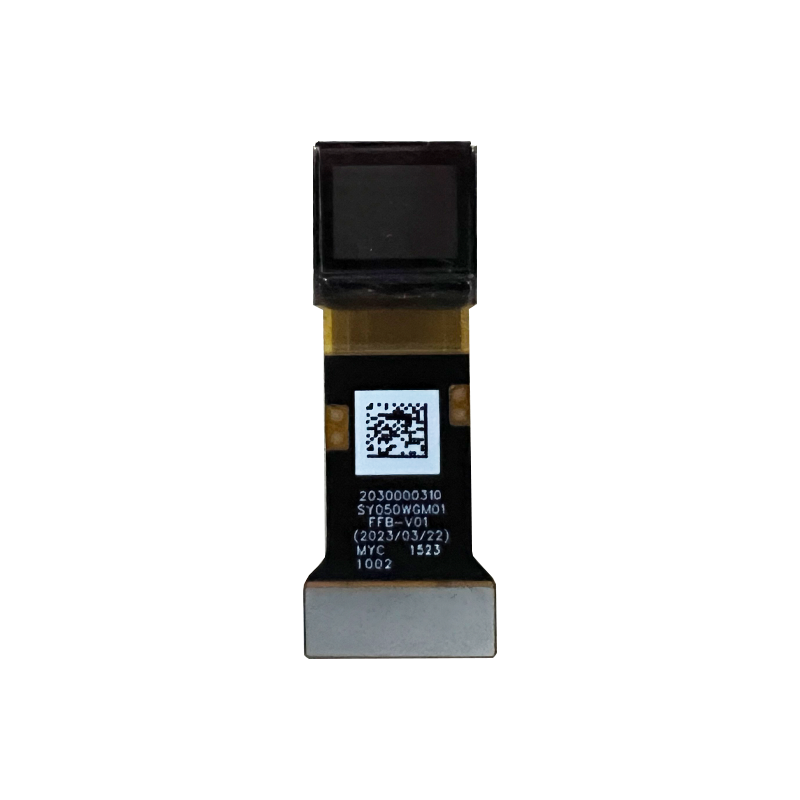

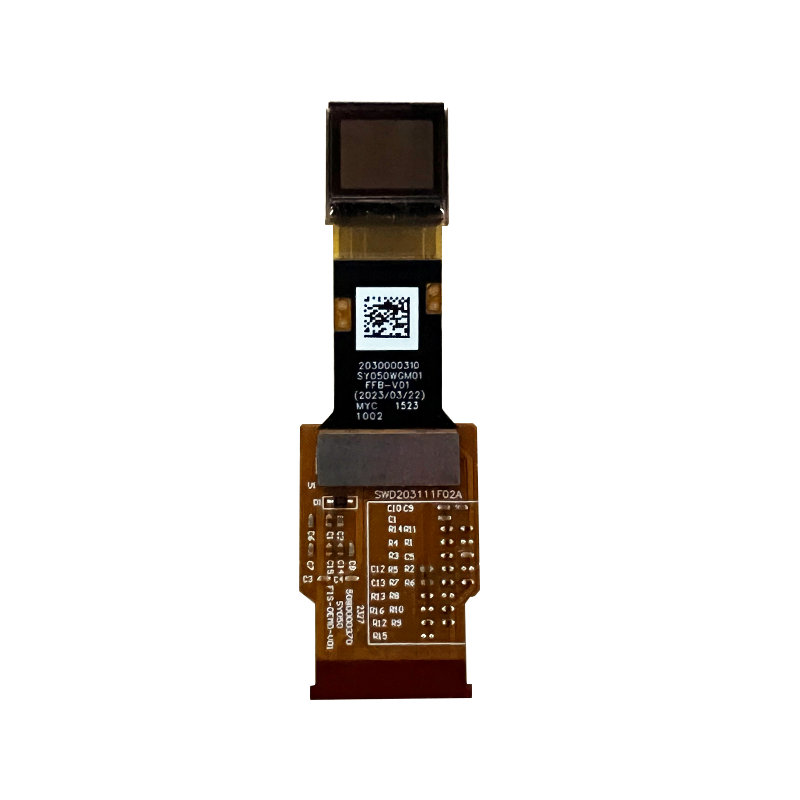
0.5inch Microdisplay 1600*1200 1000nit(Brightness can adjust)
GL050AMN10A is a 0.5-inch diagonal, 1600(RGB) × 1200 dots active matrix color OLED module based on single-crystal silicon transistors. This module integrates the panel driver and logic driver and realizes small size, lightweight, low power consumption, and high resolution.
Applications: Augmented Reality, Viewfinders, Head-mounted displays, etc.
1600×1200 Real RGB Resolution
Frame rate: 60Hz to 120Hz
- The normal operation supports full-color mode: 16.7M colors (24-bit 8(R):8(G):8(B)) or 1.07B colors (30-bit 10(R):10(G):10(B))
- Interface
— MIPI + I2C
— MIPI DPHY v1.1 with 1 port (4 lanes, 1.0Gbps/Lane)
— MIPI DSI v1.02 r11 Video mode
— Support VESA-DSC v1.1 in-chip decoder (3:1 & 3.75:1 compression ratio)
— Support scaling up x1.33 (1200×900 to 1600×1200) and x2 (800×600 to 1600×1200)
- Scan direction selection, up or down, and right or left
- Orbit supported
- Wide range Brightness adjustment
- Temperature compensation


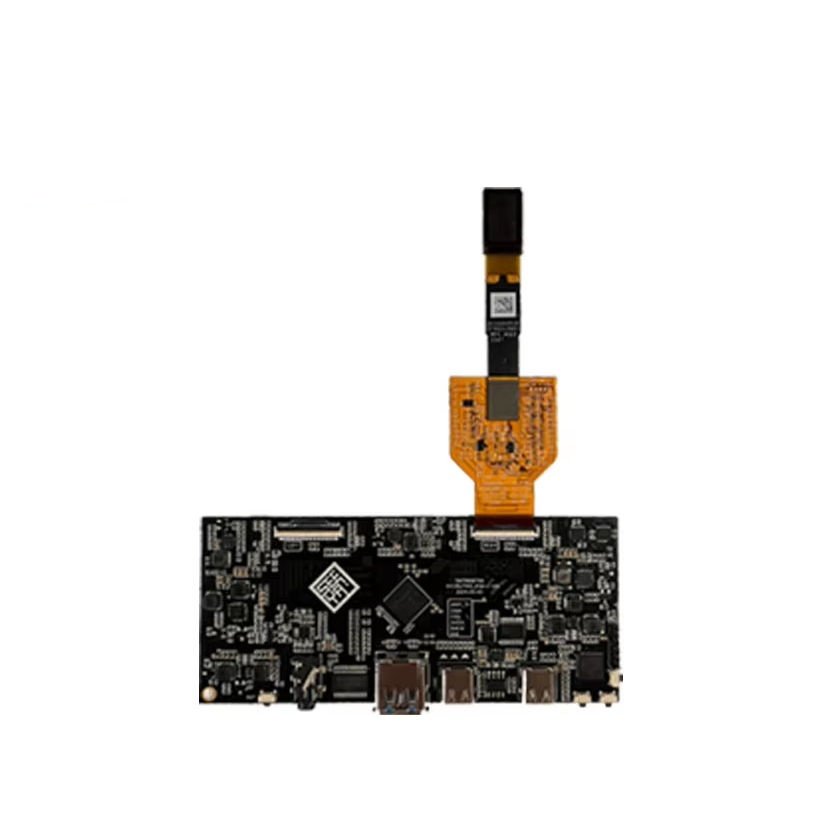
0.6inch Microdisplay 1920*1080 6000nit(Brightness can adjust)
GL060AMN10A is a 0.6inch diagonal, 1920×1080 dots active-matrix color OLED panel module based on single-crystal silicon transistors. The backplate integrates pixel circuits and displays driving circuits to get a compact size and low power consumption.
GL060AMN10A supports FHD resolution with true RGB, 16:9 aspect ratio, brightness control, temperature compensation, high image quality, adjustable display area, etc. The interface of
GL060AMN10A can support MIPI DPHY 1port / 4-ane. A VESA decoder with a compression ratio of 3x and 3.75x is supported.
GL060AMN10A also supports 1.33x,1.5x, and 2x scaling up for input different resolutions. GL060AMN10A supports 16.77M display color, separated RGB gamma correction.
Applications: Augmented Reality, Viewfinders, Head-mounted displays, FPV Gimbal etc.
1920×1080 Real RGB Resolution
Frame rate: 1920×1080 up to 120Hz
- The normal operation supports full-color mode:
16.7M colors (24-bit 8(R):8(G):8(B))
- Interface
— MIPI + I2C
— MIPI DPHY v1.2 with 1 port (4 lanes, 1.2Gbps/Lane)
— MIPI DSI v1.01 r11 Video mode
— Support VESA-DSC v1.1 in-chip decoder (3×and 3.75×compression ratio)
— Support scaling up 1.33× (1440×810 to 1920×1080) ,1.5× (1280×720 to 1920×1080) and 2× (960×540 to 1920 ×1080)
–Support normal Rolling emission and Global emission
–Scan direction flip
Power Structure: 4 input power or 5 input power
- Temperature compensation

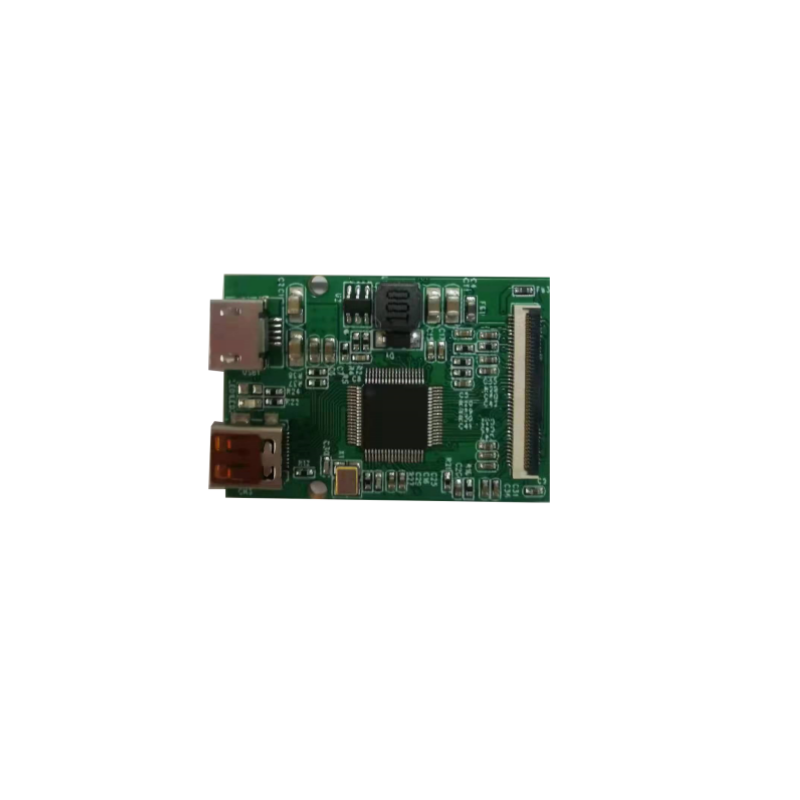
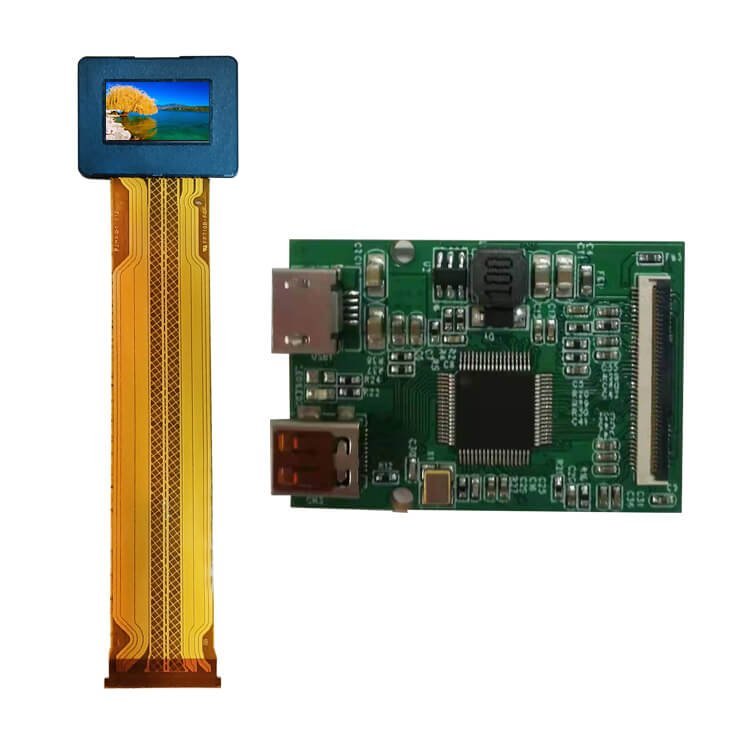
0.71inch SONY Microdisplay 1920*1080
The ECX335AF is a 1.8 cm (type 0.71) diagonal, 1920(RGB) × 1080 dots active matrix color OLED panel module using
single crystal silicon transistors. This panel incorporates panel driver and logic driver, and realizes small size, light weight
and high definition.
(Applications: View finders, head mounted displays, very small monitors etc.)
◆ Small size high definition type 0.70 display dots: 1920 (RGB)×1080 = 6.22 M dots
◆ High contrast
◆ Wide color reproduction range
◆ High-speed response
◆ Thin type and light weight
◆ Power saving function
◆ Up/down and/or right/left inverse display function
◆ Orbit supported


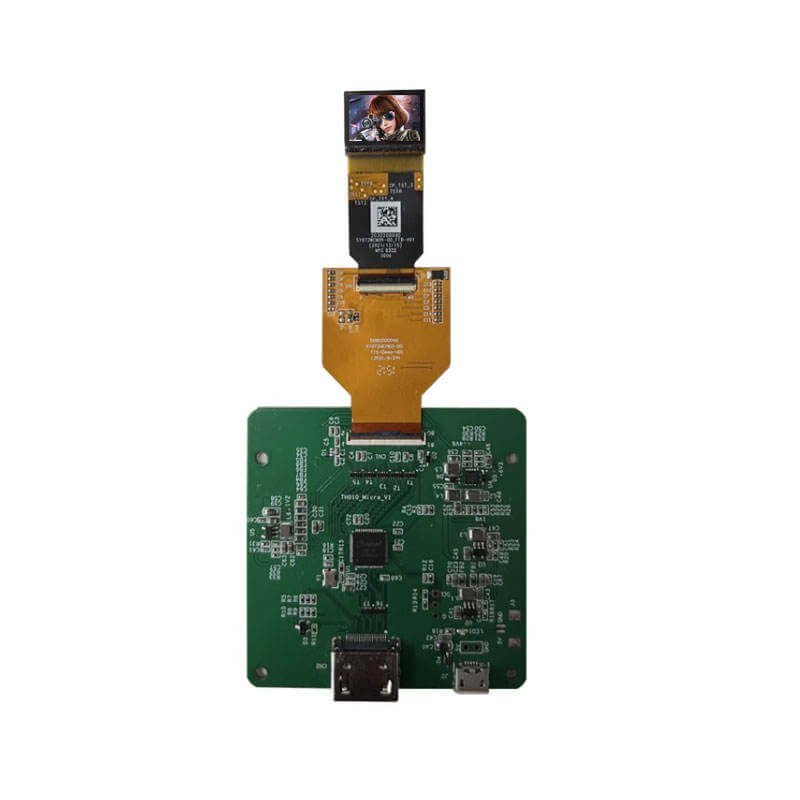
0.72inch Microdisplay 1920*1200 2000nit(Brightness can adjust)
GL072AMN10A is a 0.72-inch diagonal, 1920(RGB) × 1200 dots active-matrix color OLED panel module based on single-crystal silicon transistors. This panel integrates the panel driver and logic driver and realizes small size, lightweight, low power consumption, and high resolution.
Applications: View finders, Head-mounted displays, etc.
- 1920 x 1200 Real RGB Resolution
- Frame rate: 1920 x 1200 up to 70Hz
- Normal operation supports full color mode: 16.7M colors (24-bit 8(R):8(G):8(B))
- Interface
— MIPI + I2C
— MIPI DSI (Display Serial Interface) with 4 lanes, 1.2Gbps/Lane
— Support MIPI DSI Video mode: non-burst mode with sync pulse and non-burst mode with sync event
— Support Multi resolution:1920×1200(16:10),1920×1080(16:9),1600×1200(4:3) , 1280×1024(5:4), 1280×720(16:9) ,1024×768 (4:3)
- Vertical/Horizontal scan direction control
- Orbit supported
- Wide range Brightness adjustment
- Normal/Rolling/Dimming mode
- Temperature compensation
- 3 Power input: ELVDD(5.5v), ELVSS(-5v), VDDI(1.8v)
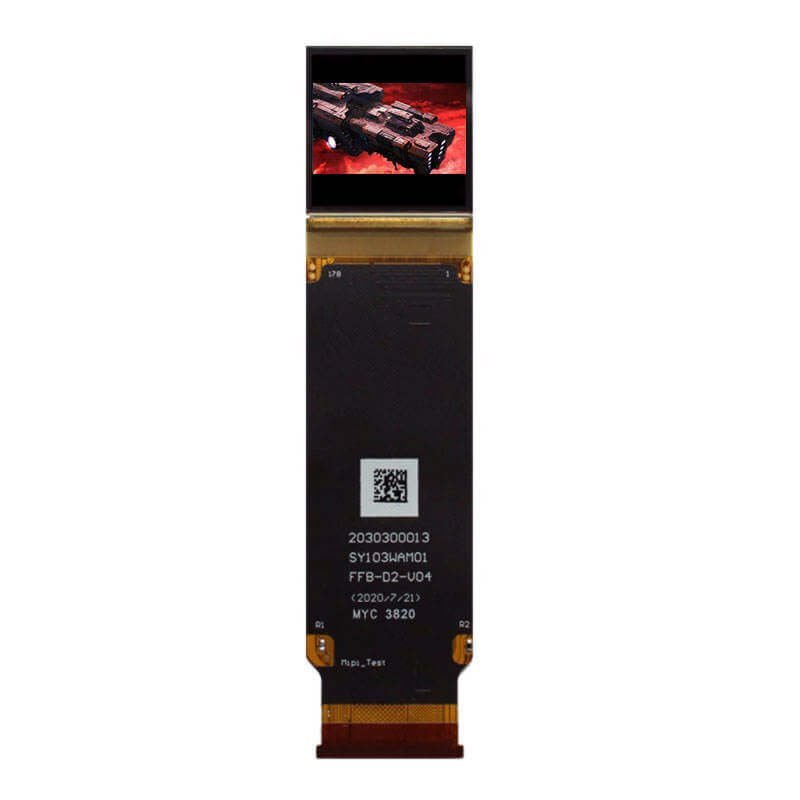


0.83inch Microdisplay 2560*1400 1800nit(Brightness can adjust)
GL083AMN10A is a 0.83inch diagonal, 2560(RGB) × 1400 dots active-matrix color OLED panel module based on single-crystal silicon transistors. This panel integrates panel driver and logic driver and realizes small size, lightweight, low power consumption, and high resolution.
Applications: View finders, Head-mounted displays, etc.
- 2560 x 1400 Real RGB Resolution
- Frame rate: 1920 x 1200 up to 70Hz
- Normal operation supports full color mode: 16.7M colors (24-bit 8(R):8(G):8(B))
- Interface
— MIPI + I2C
— MIPI DSI (Display Serial Interface) with 4 lanes, 1.2Gbps/Lane
— Support MIPI DSI Video mode: non-burst mode with sync pulse and non-burst mode with sync event
— Support Multi resolution:1920×1200(16:10),1920×1080(16:9),1600×1200(4:3) , 1280×1024(5:4), 1280×720(16:9) ,1024×768 (4:3)
- Vertical/Horizontal scan direction control
- Orbit supported
- Wide range Brightness adjustment
- Normal/Rolling/Dimming mode
- Temperature compensation
- 3 Power input: ELVDD(5.5v), ELVSS(-5v), VDDI(1.8v)
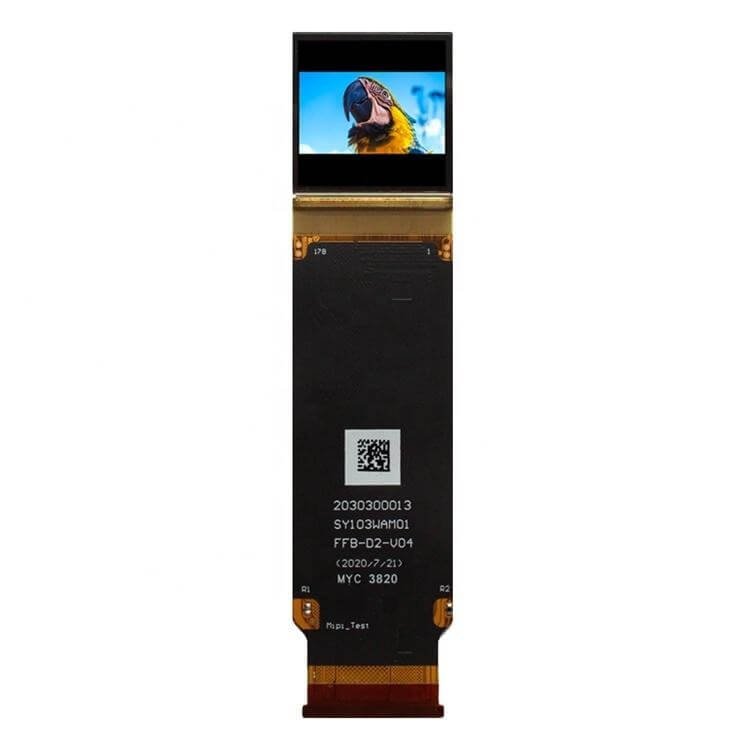

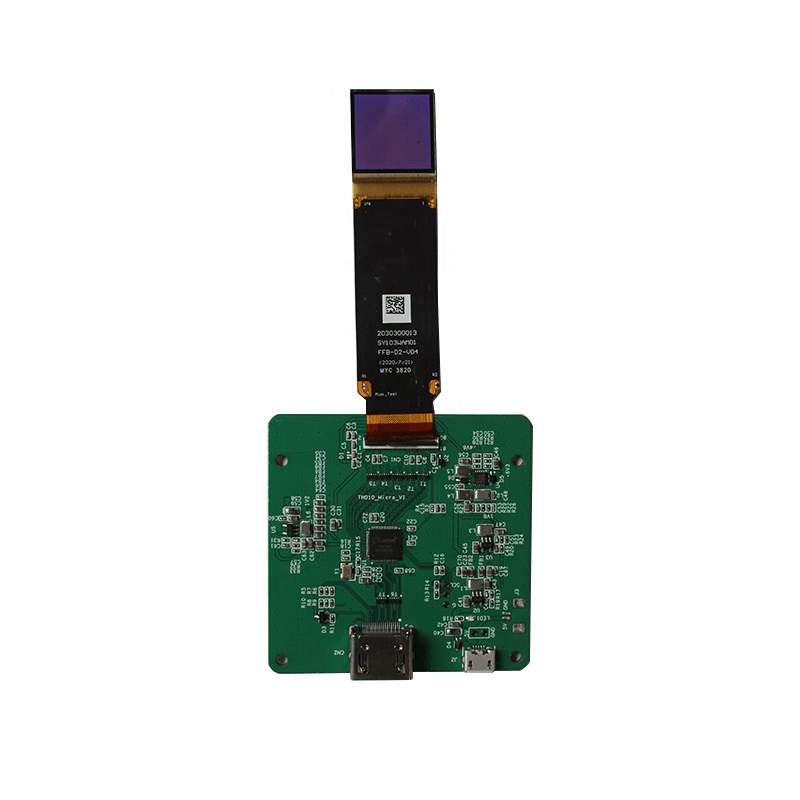
1.03inch Microdisplay 2560*2560 1800nit(Brightness can adjust)
GL103AMN10A is a 1.03 inch diagonal, 2560(RGB) × 2560 dots active matrix color OLED panel module based on single-
crystal silicon transistors. This panel integrates panel driver and logic driver and realizes small size, lightweight, low power consumption, and high resolution.
Applications: Viewfinders, Head-mounted displays, etc.
- 2560 x 2560 Real RGB Resolution
AP Operated Resolution
— 2560 x 2560: (8 x M, M=160~320) x RGB x (8 x N, N=90~320)
- Frame rate:
— 1920 x1920 input, x1.33scaling up to 2560 x2560, VESA DSC on, maximum 90Hz
— 2560 x2560, input, x1scaling up , VESA DSC on, maximum 75Hz
- The normal operation supports full-color mode: 16.7M colors
- Interface
— MIPII + I2C
— MIPI DPHY v1.2 with one / two-port (4 / 8 lanes), 1.0Gbps/Lane
— MIPI DSI v1.01 R11 Video mode
— Support VESA-DSC v1.1 in-chip decoder (3Xcompression ratio)
— Support scaling up 1.33x (1920×1920 to 2560 x 2560) and 2x (1280×1280 to 2560 x 2560)
- Scan direction selection, up or down, and right or left
- Orbit supported
- Wide range Brightness adjustment
- Sequential/Global emission
- Temperature compensation
You May Need
Easy to make microdisplay work!
- HDMI/ TYPE-C Single& Dual Driver Board
- HDMI Cables
- Eyepiece& Lens
- Customization is supported




- HDMI/ TYPE-C Driver Board
We have different Driver Boards for microdisplays.
- There is a type-c driver board 0.39inch microdisplay
- Type-c & HDMI Driver board for 0.32inch microdisplay
- Type-c & HDMI Driver board for 0.49inch microdisplay
- Type-c & HDMI Driver board for 0.5inch microdisplay
- HDMI Driver board for 0.71inch microdisplay
- Type-c & HDMI Driver board for 0.72inch microdisplay
- Type-c & HDMI Driver board for 0.83inch microdisplay
- Type-c & HDMI Driver board for 1.03inch microdisplay

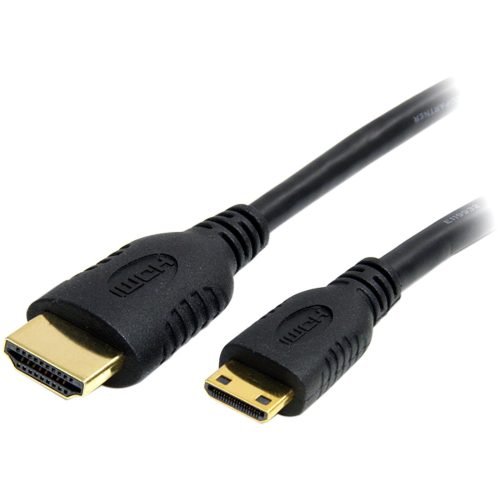
2. HDMI Cables
An HDMI cable is composed of four shielded twisted pairs, with an impedance of the order of 100 Ω (±15%), plus seven separate conductors. HDMI cables with Ethernet differ in that three of the separate conductors instead form an additional shielded twisted pair (with the CEC/DDC ground as a shield. (Wikipedia)
We can provide different types of HDMI cables for sample& mass production:
A: Regular Size( Type A)
The standard HDMI connector (Type A) is the most widely used of the five HDMI connector types. These 19-pin connectors can be found on almost every brand of TV, computer monitor, game console, streaming device, and desktop computer.
B. Mini HDMI(Type C)
Mini HDMI connectors (Type C) also have 19-pins and support the same features as the full-sized Type A connector in a smaller, more compact form factor. Because of its smaller size, it is typically used on portable devices such as DSLR cameras and tablets.
C. Micro HDMI( Type D)
The smallest HDMI connector, micro HDMI (Type D), is about half the width of the mini HDMI connector yet still retains the full functionality of its larger siblings. Micro HDMI connectors are used on small, portable devices such as phones.


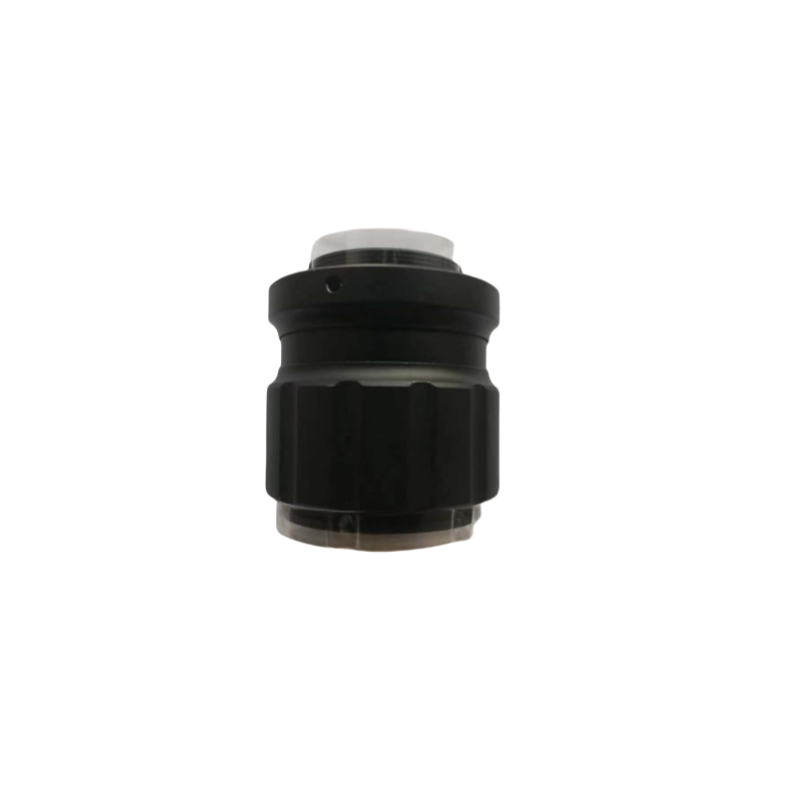
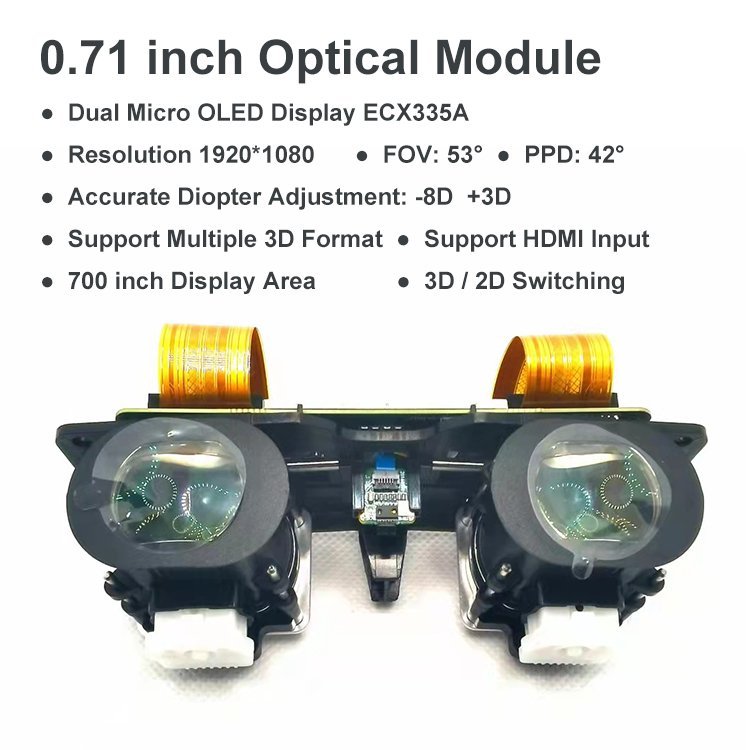
3. Eyepiece& Ocular Lens
An eyepiece, or ocular lens, is a type of lens attached to various optical devices such as telescopes and microscopes. It is named because it is usually the lens that is closest to the eye when someone looks through an optical device to observe an object or sample. The objective lens or mirror collects light from an object or sample and brings it to focus creating an image of the object. The eyepiece is placed near the focal point of the objective to magnify this image to the eyes. (The eyepiece and the eye together make an image of the image created by the objective, on the eye’s retina.) The amount of magnification depends on the focal length of the eyepiece. (Wikipedia)
We can provide matched Eyepiece& Ocular Lens for your telescopes and microscopes projects.

4. Customization Support(Driver Board)
We provide customized driver board solutions for Microdisplay OLED screens equipped with various features including brightness adjustment, headphone support, Bluetooth connectivity, gyroscope integration, split screen display, duplicate display, etc. We develop a variety of controller boards for different display interfaces, ensuring compatibility and flexibility.
Until now, we will customize different driver boards for these microdisplays:
HDMI To MIPI Controller Board;
Type-C To MIPI Controller Board;
Dual AMOLED Display HDMI to MIPI driver board;
Dual AMOLED display Type-C to MIPI driver board.
Microdisplays are small displays, typically less than two inches in diagonal size. They can be either reflective or transmissive. Reflective microdisplays use tiny mirrors to direct light into the projection lens or the viewer’s lens.
First-person view (FPV)
First-person view (FPV), also known as remote-person view (RPV), or video piloting, is a method used to control a radio-controlled vehicle from the driver or pilot’s viewpoint. Most commonly it is used to pilot a radio-controlled aircraft or other type of unmanned aerial vehicle (UAV) such as a military drone. The operator gets a first-person perspective from an onboard camera that feeds video to FPV goggles or a monitor. More sophisticated setups include a pan-and-tilt gimbaled camera controlled by a gyroscope sensor in the pilot’s goggles and dual onboard cameras, enabling a true stereoscopic view.(Wikipedia)
Electronic Monocular& Electronic Binocular
Binoculars or field glasses are two refracting telescopes mounted side-by-side and aligned to point in the same direction, allowing the viewer to use both eyes (binocular vision) when viewing distant objects. Most binoculars can be held using both hands, although sizes vary widely from opera glasses to large pedestal-mounted military models.
Unlike a (monocular) telescope, binoculars give users a three-dimensional image: each eyepiece presents a slightly different image to each of the viewer’s eyes and the parallax allows the visual cortex to generate an impression of depth. (Wikipedia)
Night Vision Device
A night vision device (NVD), also known as a night vision/observation device (NOD) or night vision goggle (NVG), is an electro-optical device that displays an image in low-light conditions, thereby improving the user’s night vision. NVD images are typically monochromatic green, as green is considered the easiest color to see for long periods of darkness.
NVDs can be handheld or helmet-mounted, and some are firearm-mounted. They can be used in conjunction with a weapon sight or on their own. Technology continues to evolve, involving several “generations”[6] of NVDs, with increasing performance and decreasing prices. As a result, while they are commonly used by the military and law enforcement, civilian users can also use NVDs for applications such as aviation, piloting, and mine clearance. (Wikipedia)
There are 0.49-inch 1920*108 and 1.03-inch 2560*2560 mono Green Color Microdisplays for your reference.
Rifle sights/ Telescopic sight
A telescopic sight, commonly called a scope informally, is an optical sighting device based on a refracting telescope.[1] It is equipped with some form of a referencing pattern – known as a reticle – mounted in a focally appropriate position in its optical system to provide an accurate point of aim. Telescopic sights are used with all types of systems that require magnification in addition to reliable visual aiming, as opposed to non-magnifying iron sights, reflector (reflex) sights, holographic sights, or laser sights, and are most commonly found on long-barrel firearms, particularly rifles, usually via a scope mount. Similar devices are also found on other platforms such as artillery, tanks and even aircraft.[2][3] The optical components may be combined with optoelectronics to add night vision or smart device features. (Wikipedia)
Electronic viewfinders (EVFs)
An electronic viewfinder (EVF) is a camera viewfinder in which the image captured by the lens is displayed on a small screen (usually an LCD or OLED) that the photographer can view while composing the shot. It differs from the live preview screen in that it is smaller and not affected by ambient light, and may use less power. The sensor records the view through the lens, processes the view, and finally projects it onto a microdisplay that can be viewed through the eyepiece. OLED microdisplay for interchangeable lens mirrorless camera viewfinders (electronic viewfinders: EVF). Camera EVF (Electronic Viewfinder).
OLED microdisplays with higher resolution. Microdisplays offer higher image quality with their superior quality and high definition. (Wikipedia)
Virtual Reality/ Augmented Reality
Augmented reality is an interactive experience that enhances the real world with computer-generated perceptual information. Using software, apps, and hardware such as AR glasses, augmented reality overlays digital content onto real-life environments and objects.
Augmented reality is an interactive experience that enhances the real world with computer-generated perceptual information. Using software, apps, and hardware such as AR glasses, augmented reality overlays digital content onto real-life environments and objects. This enriches the user experience and turns one’s immediate surroundings into an interactive learning environment, particularly valuable in manufacturing and Industry 4.0 processes. It allows industrial users to become “one” with the systems and machines they work with, and to optimize and augment technology and IoT networks with human ingenuity, observation, and creativity.
Our commitment to producing high-quality products is at the core of our brand values. We understand the importance of delivering a product that not only looks great but also meets the expectations of our customers in terms of quality and sustainability. Not only OLED Microdisplays, but also driver boards are also available if you have any interest.
At our core, customer satisfaction is our top priority, which is why we strive to create and provide top-notch TFT-LCD/OLED Displays that are tailored to your specific preferences and requirements.

With more than 7 years of experience, GL Electronics is well-versed in this field. You can trust us with your needs and expectations.
- We are certified; All materials are Rohs, Reach, and ISO approved.
- With 100%”A” grade glass and original driver IC, our displays are durable.
- 2% defective rate of the standard TFT LCD display; greater than the industry.
- All Samples are 100% inspected before shipment.
- Customization is available; We can design it according to your requirement.
- Top-notch customer service, delivered by skilled and prompt support personnel, assures customers of reliable technical assistance
Want to explore our displays? Let’s discuss it!
To save you from worries, here are some facts you need to know about our TFT LCD Display:


